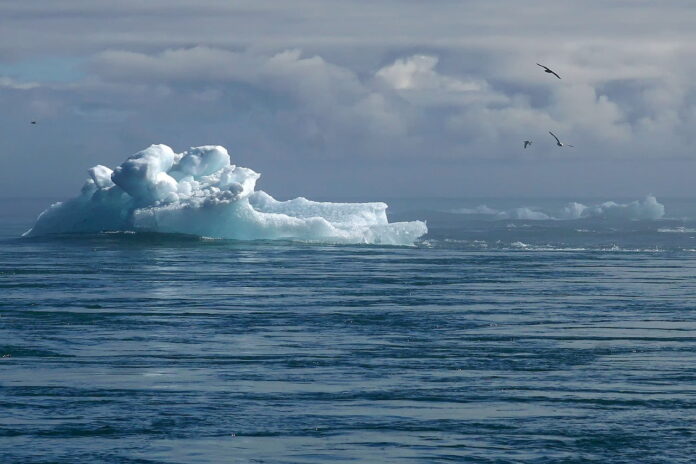As the planet continues to warm at an unprecedented rate, the delicate tapestry of life that is our global biodiversity faces significant threats. From the smallest microorganisms to the largest mammals, climate change has the potential to disrupt ecosystems and alter the natural balance that has evolved over millennia. Assessing the ripple effects of climate change on global biodiversity is not only crucial for understanding the environmental challenges we face but also for informing conservation strategies that can help mitigate these impacts.
Assessing Biodiversity Loss
Biodiversity loss is a phenomenon characterized by the decline or extinction of species, often resulting from habitat destruction, pollution, overexploitation, and invasive species. Climate change exacerbates these issues, leading to shifts in species distribution, phenological changes, and disruptions to reproductive patterns. Assessing biodiversity loss is a complex task that requires extensive monitoring and research, as it is not always immediately apparent how changes in climate affect individual species or ecosystems. Scientists use a variety of methods, including population surveys, remote sensing technology, and ecological modeling, to quantify and understand these changes.
The loss of biodiversity has far-reaching consequences that extend beyond the immediate environment. It affects ecosystem services such as pollination, water purification, and carbon sequestration, which in turn have direct and indirect impacts on human societies. Furthermore, the loss of genetic diversity within species can reduce their ability to adapt to changing environmental conditions, potentially leading to further declines. Assessing the extent of biodiversity loss is critical in identifying vulnerable species and ecosystems and in developing strategies for their protection and recovery.
As the planet’s climate zones shift, species must adapt, migrate, or face extinction. This has been observed in numerous studies that document poleward and altitudinal range shifts in various taxa. However, not all species can move quickly enough to keep pace with these changes, and those that are slow to adapt or are confined to specific habitats are at a heightened risk of extinction. Biodiversity assessments are essential for capturing the pace and scale of these ecological transformations and for prompting timely conservation action.
Climate Change: Root Catalyst?
Climate change acts as a root catalyst for biodiversity loss by altering the fundamental environmental conditions that sustain life on Earth. It changes temperature regimes, precipitation patterns, and the frequency and intensity of extreme weather events. These changes can disrupt the delicate balance of ecosystems, leading to species mismatches and breakdowns in food webs. Moreover, climate change can act synergistically with other stressors, such as habitat degradation and overexploitation, to accelerate the decline of species and ecosystems.
The evidence linking climate change to biodiversity loss is mounting, with numerous studies attributing shifts in species distributions and altered life cycles to rising temperatures and changing precipitation patterns. For example, coral bleaching events, which are driven by warmer ocean temperatures, have led to significant declines in coral reef ecosystems, which are hotspots for marine biodiversity. Additionally, the melting of polar ice caps and the thawing of permafrost have profound effects on arctic and subarctic species, further underscoring the role of climate change as a catalyst for biodiversity alterations.
However, attributing biodiversity loss solely to climate change can be an oversimplification. While it is a significant driving force, other factors such as land-use change, pollution, and invasive species also play crucial roles. These factors often interact with climate change, creating a complex web of causes that can be difficult to disentangle. Nevertheless, understanding the individual and combined effects of these stressors is essential for developing effective conservation strategies and for predicting future trends in biodiversity.
Mitigation: A Global Challenge
Mitigating the impact of climate change on biodiversity is a global challenge that requires coordinated action across multiple levels, from local communities to international organizations. Mitigation strategies must encompass both the reduction of greenhouse gas emissions to slow the rate of climate change and the implementation of conservation measures to protect and restore biodiversity. This dual approach necessitates a broad range of actions, including transitioning to renewable energy sources, protecting and restoring habitats, and promoting sustainable land-use practices.
The development and adoption of mitigation policies are often hindered by economic, political, and social barriers. The need for immediate economic gains frequently outweighs the perceived long-term benefits of conservation, leading to resistance against measures that could protect biodiversity. Additionally, the global nature of the problem means that actions taken by one country or region can be negated by inaction elsewhere, necessitating international agreements and cooperation to ensure collective progress.
Despite these challenges, there are reasons for optimism. International agreements like the Paris Agreement signal a growing recognition of the urgency of climate action. In parallel, conservation initiatives such as rewilding projects, the establishment of protected areas, and the promotion of biodiversity-friendly agricultural practices are gaining momentum. By fostering a greater understanding of the interconnectedness of climate change and biodiversity, and by promoting inclusive and equitable solutions, there is hope that the tide can be turned on both fronts.
The impact of climate change on global biodiversity is a complex and urgent issue that requires immediate attention and action. As we have explored, assessing biodiversity loss is a critical step in understanding the scale of the problem, with climate change serving as a root catalyst that magnifies existing threats to ecosystems. Mitigating these impacts presents a formidable global challenge, yet it is one that must be met with determination and collaborative effort. It is imperative that governments, organizations, and individuals work together to adopt and enforce policies that address the root causes of climate change and promote the conservation of our planet’s irreplaceable biodiversity. The choices we make today will shape the legacy we leave for future generations, and the preservation of the Earth’s rich tapestry of life hangs in the balance.
